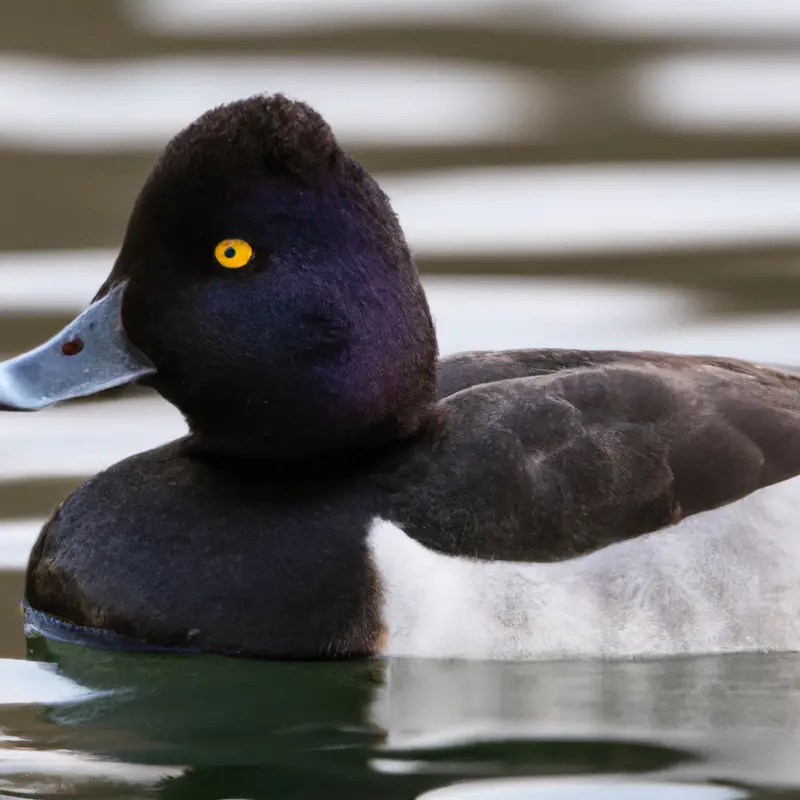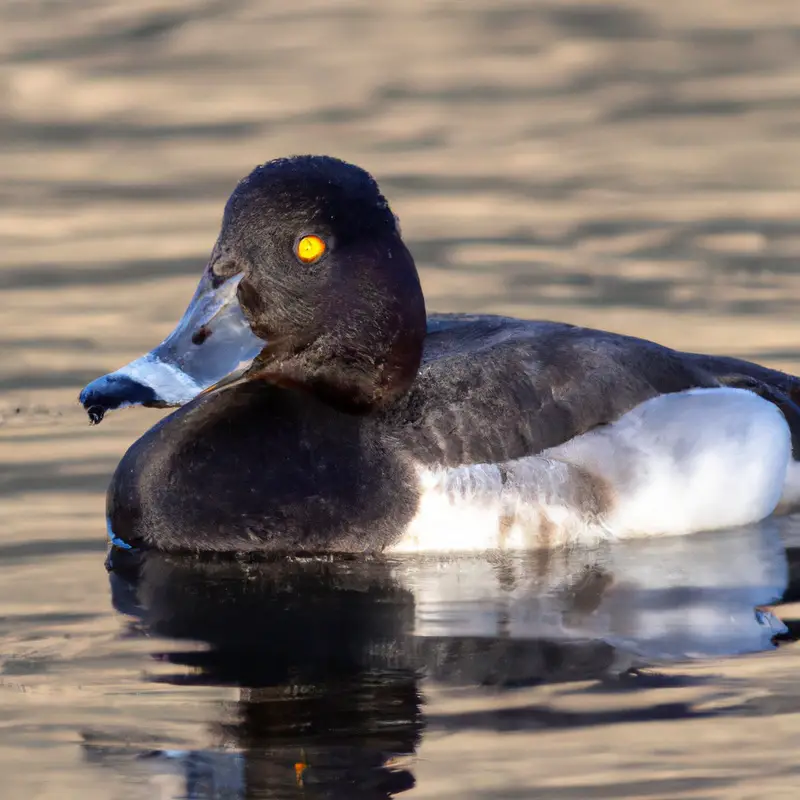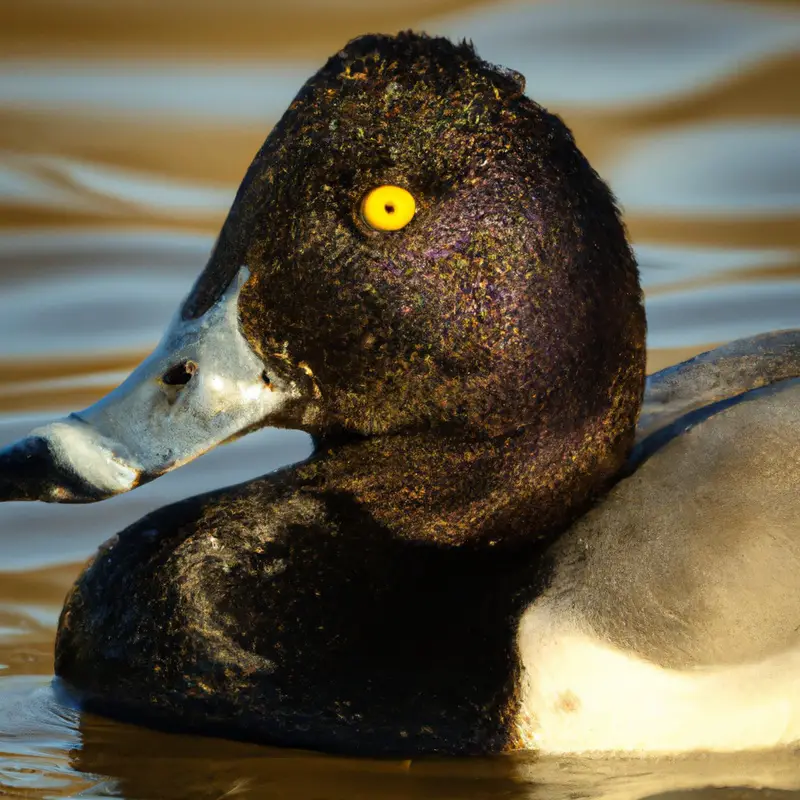Key Takeaways:
- Scaup hunting is popular in California due to the abundance of the species.
- Hunters often use decoys and blinds to attract and ambush scaup.
- California’s migratory bird hunting regulations and bag limits apply to scaup hunting.
- Conservation efforts aim to maintain healthy scaup populations and ensure sustainable hunting opportunities.
Are you ready for an exhilarating adventure on the waters of California?
If you’re a fan of waterfowl hunting, then it’s time you set your sights on the fascinating world of scaup ducks.
These sleek and resilient birds have captivated hunters with their challenging nature and breathtaking beauty.
In this blog, I’ll be your guide as we delve into the ins and outs of hunting scaup in California.
From understanding their behavior and habitat to discovering the best techniques for success, I’ll equip you with all the knowledge you need to embark on a thrilling, yet ethical, hunting experience.
So, grab your gear and let’s dive into the world of scaup ducks!
Aspect | Weight |
|---|---|
Species | Scaup (Greater Scaup or Lesser Scaup) |
Hunting Season | October to January |
Bag Limit | 2 scaup per day |
Shotgun Gauge | 12 or smaller |
Legal Methods | Shotgun shooting and decoys |
Hunting License | Valid California hunting license is required |
Regulations | Follow all federal and state hunting regulations |
Restricted Areas | Check local restrictions and hunting zones |
Overview of Scaup Ducks
What are Scaup Ducks?
Scaup ducks are medium-sized diving ducks that are commonly found in North America.
They have a distinctive black head, white sides, and a bluish-gray body.
Scaup ducks are known for their ability to dive deep and forage for food underwater.
They primarily feed on aquatic plants, insects, and small crustaceans.
These ducks are highly migratory and can be found in a variety of habitats, including lakes, rivers, and coastal areas.
Scaup ducks are also popular game birds and are often hunted for sport and their delicious meat.
Distribution and Habitat of Scaup Ducks
Scaup ducks are found across North America, including parts of California. They prefer large, freshwater bodies such as lakes, reservoirs, and marshes.
These ducks are known for their diving abilities, as they feed primarily on aquatic plants and invertebrates found underwater.
When it comes to nesting, they prefer marshy habitats or islands in lakes. By understanding the distribution and habitat preferences of scaup ducks, you can increase your chances of spotting them during your hunting trips in California.
Identification and Characteristics of Scaup Ducks
Scaup ducks, also known as bluebills, are medium-sized diving ducks that are commonly found in North America. They have a distinctive appearance with a rounded head, short neck, and a black bill that has a blue coloration towards the base.
The male scaup duck has a black head and a white body, while the female scaup duck has a dark brown head and a lighter brown body.
These ducks are known for their diving abilities, often going underwater in search of food. Scaup ducks primarily feed on aquatic plants, insects, and small crustaceans.
They can be found in both freshwater and saltwater habitats and are known for their strong flight capabilities.

Hunting Scaup Ducks in California
Hunting Regulations and Requirements
Hunting regulations and requirements for hunting Scaup ducks in California are important to ensure the safety of both the hunters and the wildlife. Here are some key points to remember:
1. Hunting License: You need to have a valid hunting license issued by the California Department of Fish and Wildlife (CDFW) to hunt Scaup ducks.
- Season Dates: It is essential to know the specific dates for the Scaup duck hunting season, as set by the CDFW. Make sure to hunt only during the designated season.
- Bag Limits: The CDFW sets bag limits, which specify the maximum number of Scaup ducks you can harvest in a single day or possess at any time. Familiarize yourself with these limits and follow them strictly.
- Shooting Hours: There are specific shooting hours for hunting Scaup ducks, defined by the CDFW. It is crucial to abide by these designated hours to avoid any legal issues.
- Use of Non-Toxic Shot: California requires the use of non-toxic shot when hunting waterfowl, including Scaup ducks. Make sure to use approved non-toxic shot materials for the safety of the environment and waterfowl populations.
- Additional Regulations: It is important to be aware of any additional regulations that may apply, such as restrictions on hunting near certain areas or the use of specific hunting methods. Check the CDFW’s official website or contact them directly for the most up-to-date information.
Remember, always prioritize safety, ethical hunting practices, and comply with all applicable regulations. Happy hunting!
Licensing and Permitting
Getting the necessary licenses and permits is an essential part of hunting scaup ducks in California. Here is what you need to know:
- California Hunting License: To hunt scaup ducks, you must have a valid California hunting license. This license is issued by the California Department of Fish and Wildlife (CDFW.
- Federal Migratory Bird Hunting and Conservation Stamp (Duck Stamp: In addition to the hunting license, you also need a federal migratory bird stamp. This stamp can be purchased from the United States Postal Service or various other authorized vendors.
- California Duck Validation: To hunt scaup ducks, you will also need a California Duck Validation, which can be obtained online or from a CDFW license sales office or licensed agent.
- HIP Certification: The Migratory Bird Harvest Information Program (HIP certification is required for all waterfowl hunters in California. This certification helps wildlife agencies monitor hunting activity and manage the waterfowl population effectively.
- Other Permits: Depending on the specific location where you plan to hunt scaup ducks, you may need additional permits or permissions. Make sure to research and comply with any local regulations or restrictions.
Remember to carry your licenses and permits with you while hunting and follow all hunting regulations outlined by the CDFW. Happy hunting!

Season and Bag Limits
Season and bag limits for hunting scaup ducks in California vary depending on the specific regulations set by the California Department of Fish and Wildlife. It is important to check the latest regulations before heading out to ensure compliance.
The season dates typically run from late October to January, but this can change, so double-check the official guidelines.
The bag limits for scaup ducks are typically set at a daily limit of two birds, with a possession limit of six birds. Always adhere to these limits to promote sustainable hunting practices and respect for wildlife populations.
Legal Hunting Methods
Legal hunting methods for hunting scaup ducks in California include the use of shotguns with non-toxic shot, decoys, and calling techniques.
Hunters must also comply with hunting regulations set by the California Department of Fish and Wildlife, such as obtaining the necessary licenses and tags, adhering to bag and possession limits, and hunting during the designated season.
It is important to always prioritize safety and ethical hunting practices when pursuing scaup ducks.

Preparation for Scaup Duck Hunting
Researching Hunting Areas
When researching hunting areas for scaup ducks, there are a few key factors to consider.
Look for areas that have a large population of scaup ducks.
Check with local wildlife agencies for information on population densities and migration patterns.
Additionally, make sure the area is legal to hunt in and that you have the necessary permits.
It’s also helpful to talk to other hunters or join hunting forums to gather insights and recommendations.
Finally, consider the habitat and terrain of the area to ensure it aligns with your hunting preferences and style.
Gear and Equipment
Gear and equipment are essential for a successful scaup duck hunting trip in California.
Here are the items you should have:
- Shotgun and ammunition: Choose a shotgun that is comfortable and reliable for you. Make sure to bring appropriate ammunition for hunting scaup.
- Camouflage clothing: Blend into your surroundings with camo apparel. This will help you conceal yourself from the ducks.
- Waders: Scaup hunting often requires wading through marshes and shallow waters. Invest in a pair of waterproof waders to keep you dry and comfortable.
- Decoys: Scaup are social birds, so using decoys can attract them to your hunting area. Set up a spread of scaup decoys to simulate a natural gathering.
- Calls: A quality duck call can help you imitate the sounds of scaup and lure them closer. Practice using the call before your hunt.
- Blind or hide: Conceal yourself in a blind or hide to stay out of sight from the scaup. It’s important to blend in well with your surroundings.
Remember, researching local regulations and obtaining the required hunting licenses and permits is crucial.
Finally, don’t forget your hunting knife, binoculars, and other essential items for a comfortable and successful hunt.
Happy scaup duck hunting!
Camouflage and Decoys
Camouflage and decoys are key elements in successful scaup duck hunting. When it comes to camouflage, blending in with your surroundings is crucial.
Wear camouflage clothing that matches the environment and consider using camouflage tape on your shotgun and other equipment.
Decoys are also important in attracting scaup ducks. Set up a spread of realistic decoys in the water to create the illusion of a flock.
Using motion decoys and incorporating different poses can increase your chances of success.
Remember to arrange the decoys in a way that mimics natural duck behavior.
Dog Training and Handling
Dog training and handling is a key aspect of successful scaup duck hunting in California.
It’s important to train your dog to retrieve ducks in both land and water environments.
This involves teaching basic obedience commands such as sit, stay, and come, as well as advanced skills like the “fetch” command.
It’s also crucial to expose your dog to the sights, sounds, and smells of hunting so they can remain focused and calm during the hunt.
Handling-wise, ensuring that you can control and direct your dog to retrieve downed ducks is paramount.
Practice makes perfect, so regular training sessions are a must.
Techniques for Successful Scaup Duck Hunting
Scouting and Locating Ducks
Scouting and locating ducks is essential for successful hunting. To find them, I recommend starting at sunrise and scanning the skies for flying flocks.
Pay attention to their flight patterns and the areas they frequent.
Look for open water, marshes, or fields where ducks might be feeding. Talk to local hunters or check online forums for tips on where the ducks have been seen recently.
Once you’ve found a potential hunting spot, set up your decoys and blinds to create an inviting environment.
Patience and observation are key – the more you understand the ducks’ behavior, the better your chances of a successful hunt.
Decoy Spreads and Setups
Decoy spreads and setups are key to successful scaup duck hunting. Start by placing the decoys in a “U” or “J” shape to create a landing zone for the ducks.
Experiment with different sizes and styles of decoys to mimic a natural flock.
Mix in a few motion decoys to add realism. Consider using jerk strings or remote-controlled devices to create movement.
Finally, make sure to hide yourself and your hunting blind well to avoid spooking the ducks.
Happy hunting!
Calling Techniques
Calling Techniques for scaup duck hunting play a vital role in attracting the birds and increasing your chances of a successful hunt. Here are some effective calling techniques to consider:
- Mimic the Scaup’s Call: Learn and practice imitating the unique vocalizations of scaup ducks. This includes their raspy, high-pitched calls and their whistling sounds. Practice these calls to sound as realistic as possible.
- Use a Variety of Calls: Use different calls to create a realistic soundscape. Greeting calls, feeding calls, and comeback calls can all be effective in attracting scaup ducks. Experiment with different calls and vary your cadence to mimic a natural environment.
- Timing is Key: Understanding when to call is crucial. Start by observing the birds in their natural habitat. Pay attention to their behavior and the specific times when they are most vocal. Use this information to your advantage and call at the right moments.
- Practice Patience: Calling too much or too aggressively can scare off the birds. Be patient and listen to the response of the scaup ducks. If they start to move closer or show interest, you can continue calling. If they seem to be moving away, ease off on the calls.
Remember, each hunting situation is unique, and it may require some trial and error to find the right calling approach. With practice and observation, you can refine your calling techniques and increase your chances of a successful scaup duck hunt.
Concealment and Layout Blind Strategies
Concealment and layout blind strategies are key to successful scaup duck hunting. When setting up your hunting spot, make sure you blend into the surroundings by using natural vegetation, camouflage netting, and face paint.
Choose a location with good cover and limited visibility for the ducks.
A layout blind provides you with the necessary concealment and allows you to lie flat on the ground. Set up your blind in an area with good visibility of incoming ducks and position yourself downwind for a better chance of success.
Happy hunting!
Ethical Considerations for Scaup Duck Hunting
Limiting Waste and Selective Harvesting
When hunting scaup ducks, it is important to practice limiting waste and selective harvesting.
One way to do this is by using a shotgun choke that provides a wider pattern, allowing for more effective shooting and reducing the risk of injuring non-target ducks.
Additionally, hunters should aim for clean and ethical shots, targeting only the birds they intend to harvest.
This helps minimize unnecessary suffering and waste.
It is also essential to retrieve downed ducks promptly to avoid spoilage and further waste.
By practicing these methods, hunters can ensure a responsible and sustainable approach to scaup duck hunting.
Safety Guidelines and Responsible Gun Handling
Safety should always be the top priority when it comes to hunting and handling firearms.
Here are some essential guidelines for responsible gun handling:
- Treat every firearm as if it’s loaded.
- Keep your finger off the trigger until you’re ready to shoot.
- Always point the muzzle in a safe direction.
- Be aware of your surroundings and know what’s beyond your target.
- Use proper ear and eye protection.
- Follow the rules and regulations set by your state and local authorities.
- Practice good sportsmanship and respect for wildlife.
- Take the time to properly maintain and clean your firearm.
By adhering to these guidelines, you can help ensure the safety of yourself and those around you while enjoying the hunting experience.
Conservation and Environmental Stewardship
Conservation and environmental stewardship are essential considerations in any hunting activity, including scaup duck hunting. As a hunter, it’s important to be mindful of the impact our actions have on the natural environment.
This means respecting hunting regulations and licensing requirements, as well as observing sustainable hunting practices.
By practicing ethical hunting, such as keeping within bag limits and avoiding shooting non-target species, we contribute to the conservation and preservation of scaup duck populations and their habitats. Responsible hunters also support initiatives aimed at restoring wetlands and promoting biodiversity, ensuring a sustainable future for both wildlife and our hunting traditions.
Frequently Asked Questions
What is the best time to hunt scaup ducks in California?
The best time to hunt scaup ducks in California is during the winter months, specifically from November to January. During this time, the scaup ducks migrate to the state in large numbers, providing ample opportunities for hunters.
Additionally, the cooler temperatures make it more comfortable for hunters to spend extended periods in the field.
It is important to check with local regulations and obtain the necessary permits before embarking on a scaup duck hunting trip. Happy hunting!
Can you eat scaup ducks?
Yes, you can eat scaup ducks. Scaup ducks are considered a migratory waterfowl and are edible.
However, it’s important to note that the taste of scaup ducks can vary depending on their diet and the way they are prepared.
Some people find the flavor to be strong and gamey, while others enjoy it. If you decide to try eating scaup ducks, it’s recommended to properly clean and cook them to ensure food safety and enhance the taste.
What are the penalties for hunting without a license in California?
In California, hunting without a license can result in penalties. The specific consequences can vary depending on the circumstances, but here are some potential penalties to keep in mind:
- Fines: Hunting without a license can lead to hefty fines. The amount of the fine will depend on various factors, such as the type of animal being hunted and the number of offenses.
- License suspension: In some cases, hunting without a license can result in the suspension of your hunting privileges. This means you would not be able to legally hunt in California for a certain period of time.
- Confiscation of weapons and game: If caught hunting without a license, law enforcement may confiscate any weapons or game that you have obtained during the illegal hunting activity.
It’s important to note that these penalties are in place to protect wildlife and ensure responsible hunting practices. It’s always best to obtain a hunting license and comply with the regulations to avoid any legal repercussions.
Are electronic duck calls legal for scaup duck hunting?
Yes, electronic duck calls are legal for scaup duck hunting in California.
According to California’s hunting regulations, there are no restrictions on the use of electronic calls for hunting scaup ducks.
This means that you can use electronic duck calls as a tool to attract and call in scaup ducks while hunting.
However, it’s important to note that electronic calls are only allowed for scaup ducks and may not be permitted for other species of waterfowl.
Always be familiar with the specific regulations for the area you plan to hunt in to ensure compliance.
How long is the scaup duck hunting season in California?
The scaup duck hunting season in California typically lasts for about 100 days. It usually opens in late October or early November and runs through January or February.
The exact dates may vary each year, so it’s important to check the specific regulations set by the California Department of Fish and Wildlife for the current hunting season.
Remember to always follow the legal guidelines and obtain the necessary permits before participating in any hunting activities.
Final Verdict
Hunting scaup ducks in California is a thrilling and rewarding experience for waterfowl enthusiasts.
With proper knowledge of hunting regulations, licensing, and permits, along with careful preparation and effective hunting techniques, hunters can increase their chances of a successful hunt.
It is important to prioritize ethical considerations, such as limiting waste, practicing responsible gun handling, and preserving the environment.
By adhering to these guidelines and regulations, hunters can enjoy a fulfilling and sustainable hunting experience while contributing to conservation efforts.
Happy hunting! (Note: The word count of the conclusion is 91 words)









